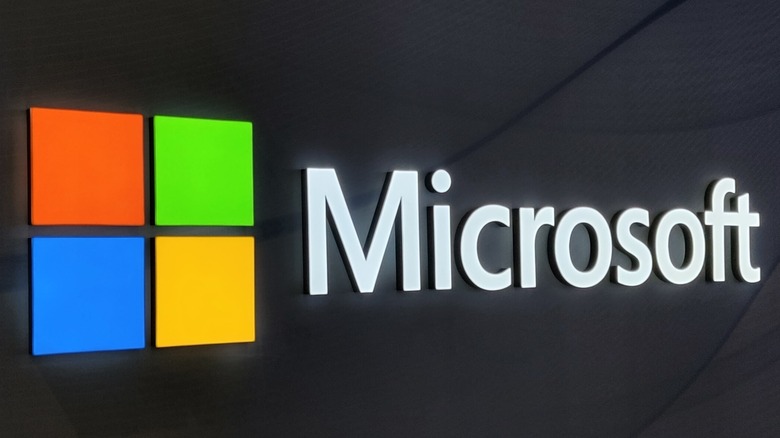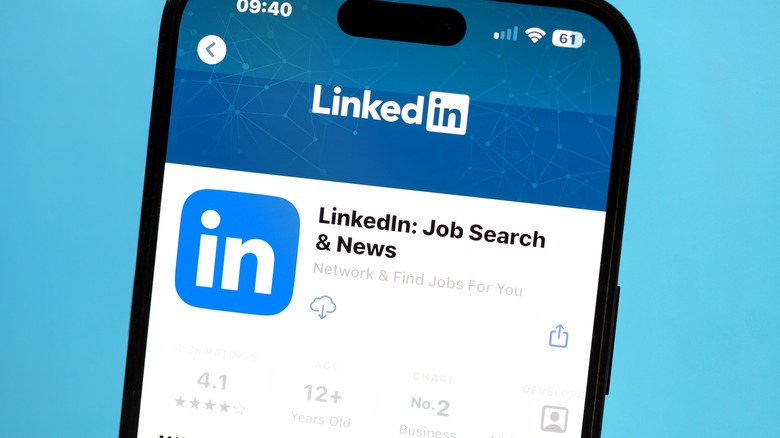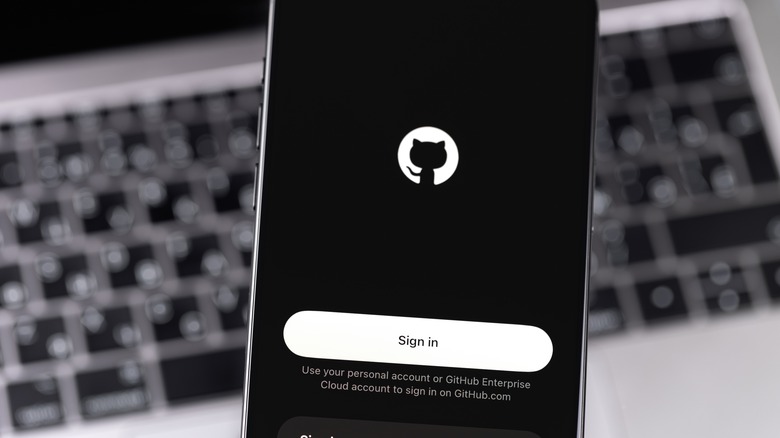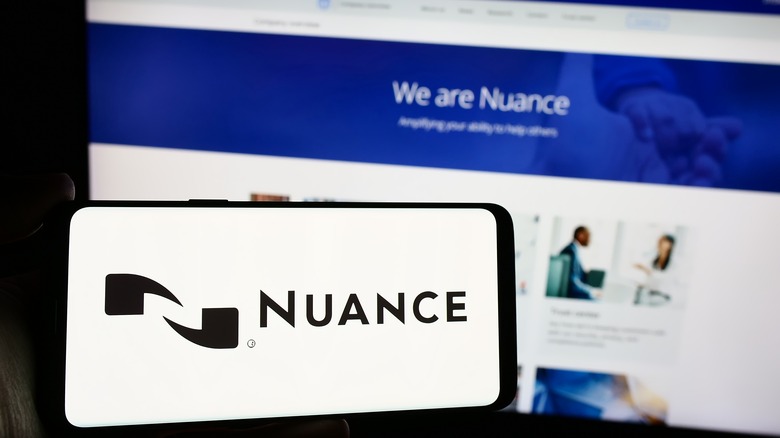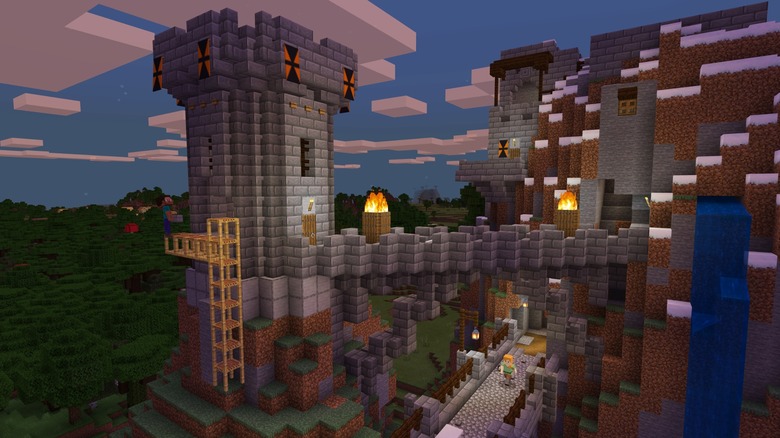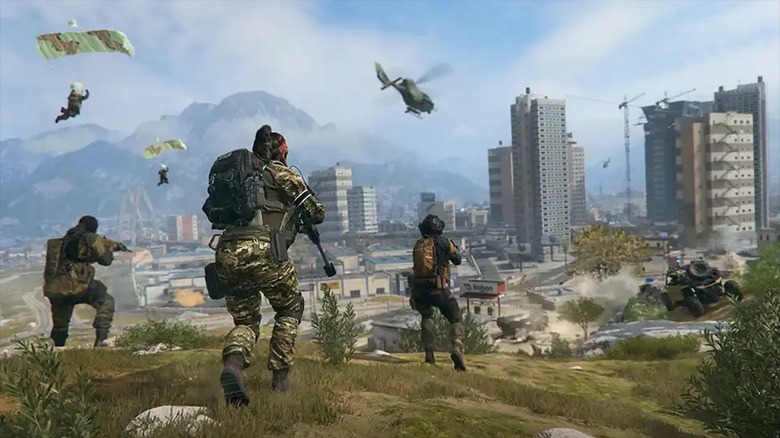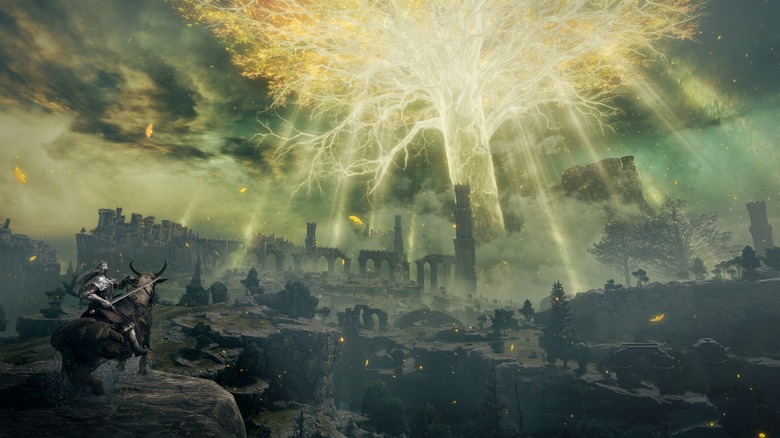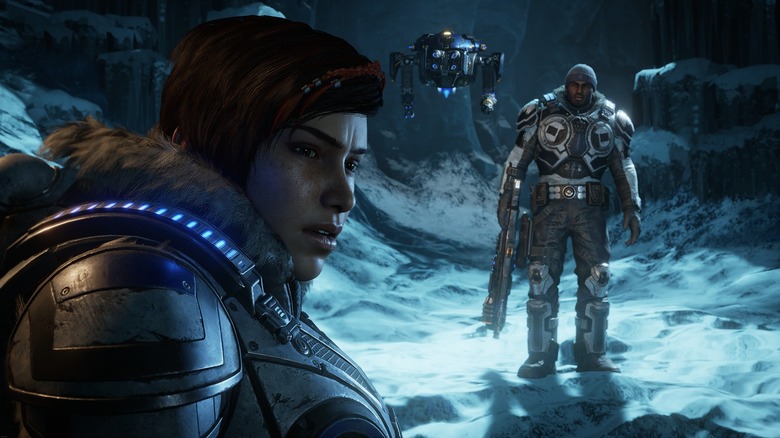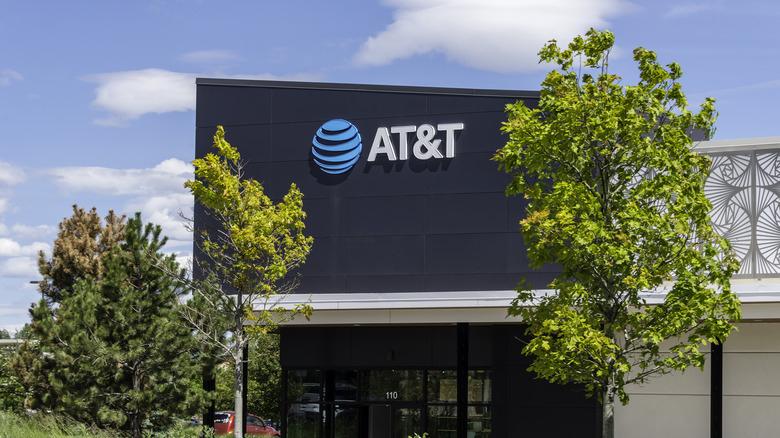10 Apps, Services, And Tech Brands You Might Not Realize Are Owned By Microsoft
Microsoft has come a long way since its days as a small computer software manufacturer. Granted, Microsoft didn't start selling its most popular product, Windows, until 1985, and the operating system didn't truly catch on until the arrival of Windows 95, but these successes allowed the company to improve its products and venture into new industries. One of the main ways that Microsoft has found entrance into these new opportunities is by buying other companies.
Today, Microsoft is a powerhouse with its fingers in virtually every corner of the tech market. Microsoft Windows and its myriad of editions are some of the most commonly used computer operating systems across the globe, and Microsoft also owns a significant share of the video game market in the United States and Europe thanks to its line of Xbox consoles. Many features in recent Windows versions and updates were built by companies Microsoft owns, and some of the best Xbox games were developed by studios that worked directly under Microsoft.
However, those subsidiaries are generally well-known. After all, there isn't a gamer out there who doesn't know that Microsoft owns Bethesda ZeniMax, and Visio is a household name because so many businesses rely on its flowchart software. However, some companies fly Microsoft's banner without people knowing it. Maybe these organizations aren't as well known, or perhaps they went about business as usual after the acquisition, so nobody realized the organization is part of the Microsoft family. Here are 10 tech brands and their respective apps and services that you probably never knew were owned by Microsoft.
When a major tech company seeks to purchase smaller businesses, it usually looks for organizations with either overlapping or analogous expertise and target audiences. The last thing anyone would expect a computer software company to buy would be a service that helps users network and apply for jobs.
Virtually everyone who has applied for a job within the last two decades has used, or at the very least knows about, LinkedIn. The service is a veritable Swiss Army Knife of job searching tools and features that help users find new opportunities and connect with potential employers or future co-workers. Even when people aren't applying to open positions or sending resumes, many use LinkedIn to just chat or post their latest achievements. Networking and portfolios are important to the hiring process, after all.
In 2016, Microsoft purchased LinkedIn to the tune of $26.2 billion, making it the company's most expensive acquisition at the time and the second-most expensive so far. In fact, Microsoft wouldn't break that record until it purchased Activision Blizzard for $75.4 billion in 2023. For the most part, LinkedIn is independent from Microsoft, as the social network retained everything from its culture to its CEOs. Thanks to this purchase, LinkedIn could expand its influence even further using Microsoft's cloud servers. This promised independence is probably why most people don't know LinkedIn is a member of the Microsoft gang.
GitHub
Microsoft's existence hinges on its ability to code signature products like Windows properly, and coding is a group effort that requires users to store and share their projects. As such, buying a company that specializes in the management of coding projects makes perfect sense for Microsoft.
GitHub is a robust, open-source project management platform that lets users create, store, and share the code for virtually any program they can think of -– within the boundaries of the law, that is. The service even has tools to help organize projects, such as bug tracking and how-to wikis. Everyone can access the codes stored in GitHub vaults, but in order to actually edit them or start a project, users have to register with the site.
In 2018, Microsoft purchased GitHub for $7.5 billion in order to "strengthen our commitment to developer freedom, openness and innovation." This turn of events was not all that surprising since Microsoft had been steadily embracing open-source project tools in the years prior. Still, the purchase likely flew under the radars of many Windows users since GitHub retained its independence and was permitted to provide services for all coders regardless of industry, preferred programming language, or operating system. Subsequent acquisitions, such as of the code analysis tool Semmle, have only increased GitHub's productivity and viability to Microsoft.
Nuance Communications
Usually, companies save their most expensive acquisitions for the highest of high-profile organizations. When Microsoft spent $75.4 billion on Activision Blizzard, the company did so knowing it would acquire the money printing machines like "Call of Duty" and "World of Warcraft." However, as we'll see a few times on this list, Microsoft has also spent plenty of money acquiring companies you've probably never heard of.
The somewhat obscure company Nuance Communications is a computer software manufacturer specializing in speech recognition and artificial intelligence to help generate documentation and forms. For instance, one Nuance item can automate how doctors fill out clinical documents, while another is a cloud-based program that lets users dictate whatever they need jotted down in writing.
In 2022, Microsoft purchased Nuance Communications for $19.7 billion, making it the third-most expensive acquisition in the company's history. However, this raises the question of what Microsoft saw in Nuance and why it was willing to pay top dollar. You might be surprised to learn that Nuance has been around in one form or another since 1992, and has actually been quite successful. The most likely scenario is that Microsoft purchased Nuance for its AI technology and expertise in industries such as finance and healthcare. After all, Microsoft has been offering cloud services for healthcare providers ever since 2020, so who better to help improve that product?
Skype
Today's technology is defined by its ability to effortlessly connect multitudes of users over long distances. People have no shortage of videoconferencing app options to choose from, but Microsoft decided to edge out the competition by offering one with every copy of Windows. After the company purchased the developer of the app, that is.
Skype is a name that needs no introduction. The program is one of the world's most frequently used videoconferencing services. Skype began life in the early 2000s for the purposes of sharing home Wi-Fi, but the founders quickly changed gears to making voice calls affordable or even free using peer to peer data sharing technology. Skype's software entered the alpha testing phase in 2003, followed shortly by a public beta. From there, the program grew into a global telecommunications giant.
In 2011, Microsoft acquired Skype for a hefty $8.5 billion. Thanks to this purchase, Microsoft started integrating the Skype app into not only every copy of Windows but also many Microsoft-branded devices, including the Xbox One. This acquisition gave Microsoft an excuse to finally sunset Windows Live Messenger, and in return Skype got to use Microsoft's supernodes as opposed to relying on peer-to-peer technology. Microsoft has also implemented several new features into Skype, the latest of which utilize the company's AI software. These include Bing AI chatbot and background blurring.
GIANT Company Software
No two people can agree on what antivirus software to use. Plenty of companies offer paid and free antivirus programs that provide plenty of protection, and while Microsoft's proprietary antivirus app isn't the absolute best, it can still stand toe-to-toe with the greats. So how did the company produce this powerful tool? By purchasing another company that could make it, that's how.
GIANT Company Software was once a prestigious developer that specialized in anti-spyware and Internet security products. GIANT Company Software's leading program was, fittingly enough, GIANT AntiSpyware. In 2004, Microsoft announced that it acquired GIANT Company Software to improve its own antivirus software. This program beaome Windows Defender, which in turn would eventually be rebranded as Microsoft Defender.
It's difficult to say if Microsoft still owns GIANT Company Software as an independent company. GIANT Company Software's work is still intact and serves as the foundation of Microsoft Defender. Without those initial assets, there would be no Microsoft Defender — or at least it would be a completely different beast codewise.
Mojang
Most game studios Microsoft has purchased work on titles exclusive for Xbox and Windows platforms. For instance, Bungie originally specialized in games for Windows and Macintosh, but after Microsoft bought out the studio, it exclusively developed titles for the Xbox. However, for some companies, it's business as usual even when owned by Microsoft.
Mojang is the company behind the global phenomenon known as "Minecraft." What started as a fun game about survival and crafting has grown to a franchise that encompasses books, toys, dungeon crawlers, RTS games, and an upcoming movie. "Minecraft" is so popular that countless other companies have signed on to have their characters feature as skins and custom modes. More importantly, while "Minecraft" originally released on PC, the game and its spin-offs have launched on virtually every console on the market, including Xbox, PlayStation, and Nintendo devices.
Microsoft had acquired several game studios before buying Mojang in 2014, but these studios didn't quite receive the same attention. Not only did Microsoft spend $2.5 billion, but it was the first time it had purchased a well-established studio with a multi-platform presence. More importantly, unlike prior studios, Mojang was not beholden to any console exclusivity after the buyout. The company continued to publish "Minecraft" on PC, PlayStation, Nintendo, and mobile platforms. Mojang even added crossplay functionality under Microsoft's watch. The many ways you can play "Minecraft" makes it easy to forget Microsoft is involved — but it has been for a decade.
All the Call of Duty developers
Most gamers associate "Call of Duty" with Activision, but it's easy to forget the company is only the publisher. In truth, so many studios contribute to the "Call of Duty" franchise that it's difficult to keep track of who does what, but when Microsoft purchased Activision Blizzard, it gained ownership of all these studios as well.
The "Call of Duty" franchise began back in 2003 with the original title developed by Infinity Ward. That studio worked on a sequel that launched in 2005, but "Call of Duty 3," released in 2006, was instead developed by Treyarch while Infinity Ward focused on the next chapter of the franchise, "Call of Duty 4: Modern Warfare." To stick to an annual release schedule, these two studios tagged in and out for development, but they were soon supported and supplemented by companies such as Sledgehammer Games, Raven Software, Beenox, and High Moon Studios.
When Microsoft purchased Activision Blizzard, Microsoft also received all the studios tied to the "Call of Duty" name as part of the deal. These studios are still technically independent from Microsoft, but only in the same way Activision Blizzard is. Moreover, given the mercurial nature of the video game industry, this ownership can change at any moment.
After all, Microsoft shuttered plenty of studios in 2024 alone, and "Crash Bandicoot" creators Toys For Bob cut ties with Activision Blizzard and Microsoft the same year. So how long will these studios stay under the Microsoft umbrella? Only time will tell.
Havok engine
Every video game is made with an engine that dictates how everything works. Well, almost everything. Aspects such as combat mechanics and texture streaming are generally controlled by engine subsystems. However, some engines aren't equipped for simulating physics. In that case, the developers need some help.
The Havok Engine is a piece of middleware software specializing in physics and cloth simulation. If a video game features the real-time collision of two characters or objects and the main engine can't handle it, the developers turn to Havok. The engine also provides pathfinding capabilities for NPCs. If you've played a video game, odds are you have seen at least one aspect of the Havok engine in action. Havok has been used for titles such as "Monster Hunter World: Iceborne," "Final Fantasy XVI," "Elden Ring," and even "Animal Crossing: New Horizons."
Microsoft acquired Havok way back in 2015 to help provide its studios more and better development tools. However, as you probably noticed, every game listed above launched long after 2015. This is because prior to the purchase, Havok licensed out its engine to any developer who wanted to use it, and the acquisition did not change that. Maybe Microsoft-owned studios get to waive licensing fees? Either way, it's still business as normal at Havok, despite being owned by Microsoft for almost a decade.
Simplygon
Rendering a game world is a balancing act between fidelity and efficiency. Most studios want their games to look as beautiful as possible, but if a 3D game looks too beautiful, the platform can and will crash. Many engines need help determining what has to be rendered in full and where and when corners can be cut for the sake of performance.
Simplygon is one of the most frequently used 3D game optimization suites out there. The dirty secret of video game worlds is that loading in an entire level would be inefficient and possibly disastrous. Programs such as Simplygon help lighten the computational load by determining what can be loaded in and what requires high-fidelity assets and what can utilize low-poly models to save on memory. Like with the Havok engine, odds are you've played at least one title that uses Simplygon. Games such as "The Witcher 3: Wild Hunt," "Alan Wake 2," Devil May Cry 5," and "Resident Evil 7: Biohazard" are all powered by the program.
In 2017, Microsoft announced it had purchased Simplygon to help further its 3D for everyone vision. As of 2024, this buyout has allowed Simplygon to make some serious advances. For example, the program's optimization process of developing level of detail meshes has been streamlined thanks to the automated asset optimization feature. Similar to Havok, Simplygon licensed out its suite to developers before Microsoft purchased the company and continues to do so, meaning that most people might not realize Microsoft even owns Simplygon.
AT&T Network Cloud
AT&T doesn't quite dominate the market as it once did, but the company has stuck around, albeit with a few dings and scrapes. This included selling off a part of its services to Microsoft barely a year after the two companies started collaborating with one another.
If you have never heard of the AT&T Network Cloud, it's exactly what it sounds like — AT&T's proprietary cloud network. The system was designed to be used by virtually any carrier without sacrificing security or differentiation, which might have been a big reason Microsoft was so interested in the first place.
In 2021, Microsoft and AT&T entered a partnership to move its 5G mobile network to the Microsoft Cloud. This collaboration let Microsoft Azure manage AT&T's mobile network traffic, and in 2022, that partnership evolved into a full-blown acquisition. Azure still manages the cloud, but the purchase gave Microsoft a lot more hybrid infrastructure to work with. Microsoft even envisioned a cloud network that could repair and protect itself through the use of self-optimizing AI and machine learning. Sounds perfect when your business focuses on two major products with cloud networking baked into them.
Of course, AT&T is still an independent entity — it's just the cloud networking technology portion that joined up with Microsoft.
